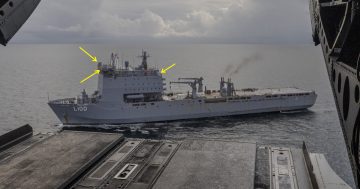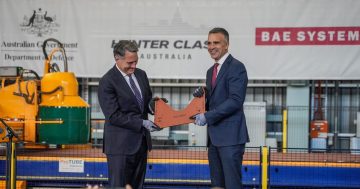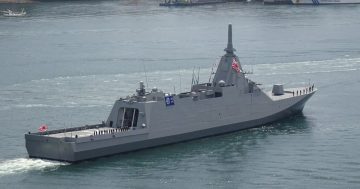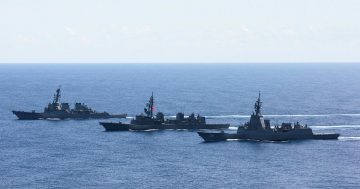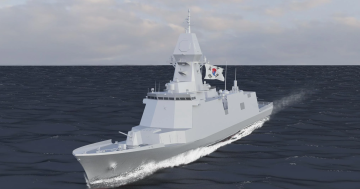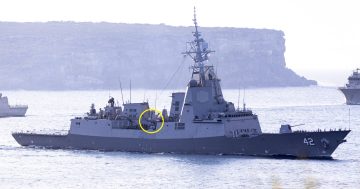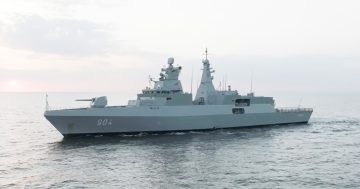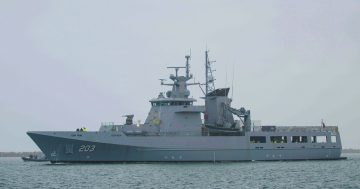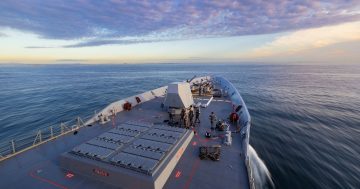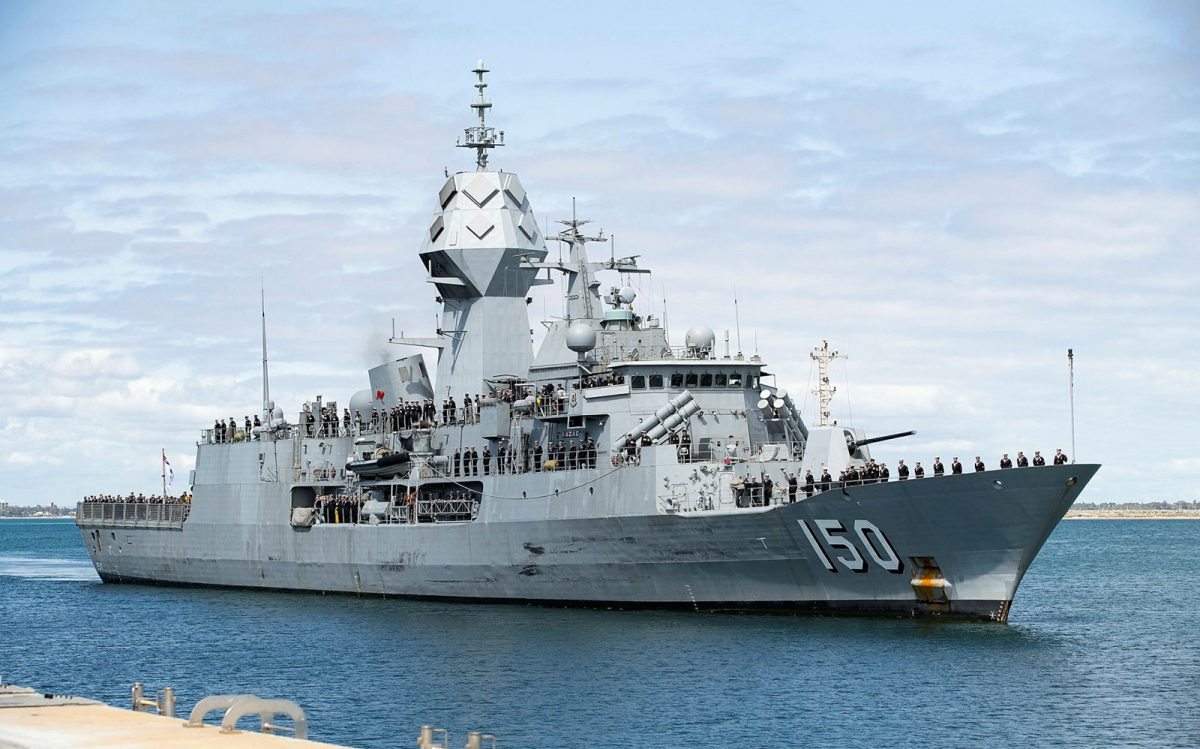
HMAS Anzac returns to Fleet Base West in September 2023 after its final deployment. Photo: ADF.
One of the key elements of February’s Surface Combatant Review was the replacement of the Royal Australian Navy’s eight Anzac-class frigates with a new class of ”general purpose frigates” from 2030.
This plan saw the much larger Hunter-class frigate program reduced in scope from an intended nine vessels to six, and the Arafura-class offshore patrol vessel (OPV) program reduced from at least 12 hulls to just six as well.
While these changes will eventually boost the navy’s overall number of surface combatants, in the short term there will be a dip in numbers, as some of the Anzac-class frigates won’t make it until the first general-purpose or Hunter-class frigate enters service.
In fact, the lead vessel of the class, HMAS Anzac III, was decommissioned on the weekend – 28 years to the day after it was commissioned – at a ceremony in Fremantle.
Based on the German Blohm + Voss Meko 200 frigate design, HMAS Anzac is a helicopter-capable frigate (FFH) built by Tenix Defence Systems (now BAE Systems) at the Williamstown yard in Melbourne. A total of 10 Anzac-class frigates were built by Tenix, including two vessels for the Royal New Zealand Navy.

HMAS Anzac operating in the Persian Gulf in 2002. Under the ASMD and AMCAP upgrades, the Anzac class’s rear mast was dramatically reprofiled. Photo: ADF.
The third RAN vessel to carry the name, it was launched in 1994 and commissioned as HMAS Anzac III, with the hull number FFH 150, on 18 May, 1996.
The vessel is 118 metres (390 feet) long, has a beam of 15 (49 feet) metres and displaces about 3800 tonnes full load. All Anzacs are powered by a single LM 2500 gas turbine and two MTU 12V 1163 TB83 diesels, giving a top speed of about 27 knots.
Nicknamed ”First Lady of the Fleet”, HMAS Anzac III has a crew complement of 170. It was granted freedom of entry to the city of Albany in WA – the departure port for Anzac troops in World War I – and has a close association with the city of Rockingham in Perth.
During its service, HMAS Anzac has been awarded battle honours for participation in operations in East Timor in 1999, three deployments to support operations in the Persian Gulf in 2001-2003, and in Iraq in 2003.
The East Timor operations from 19-29 September, 1999, were part of a larger multinational Australian-led INTERFET peacekeeping taskforce.
On 21 March, 2003, HMAS Anzac provided naval gunfire support to troops ashore in the battle of Al Faw near the mouth of the Shatt al-Arab waterway in Iraq, a battle also colloquially known by the crew as ”five-inch Friday” in reference to the calibre of the ship’s main guns.
The Anzac class is equipped with a Sikorsky MH-60R Romeo Seahawk combat helicopter for anti-surface, anti-submarine and logistics operations, a five-inch-calibre main gun, a Thomson Sintra sonar system, the Enhanced Sea Sparrow (ESSM) anti-air missile, Harpoon Block II anti-ship missiles, MU 90 anti-submarine torpedos, and the Australian-developed Nulka active missile decoy system.
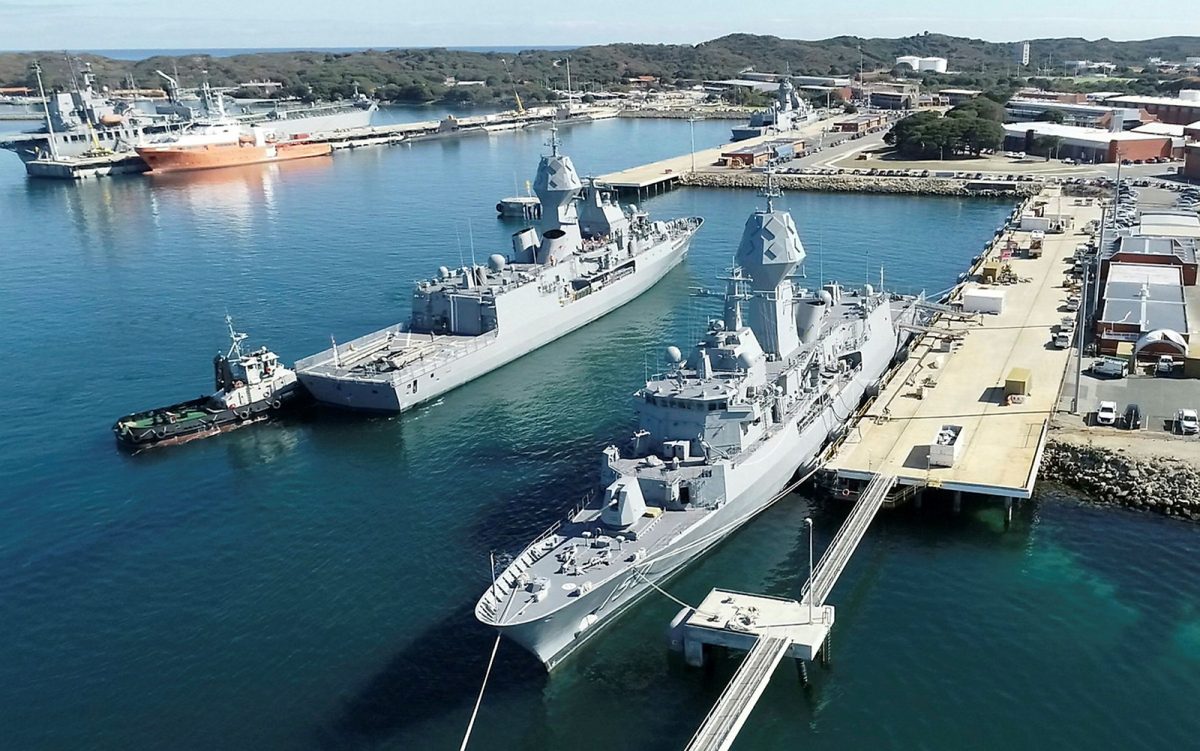
HMA Ships Anzac and Arunta sporting their advanced CEA Technologies CEAFAR and CEAMOUNT phased-array radar masts in 2020. Photo: ADF.
The Anzac class has undergone two major upgrades under Projects SEA 1440 Phases 2A/2B, and Phase 4B.
Also known as the Anzac anti-ship missile defence (ASMD) program, Phases 2A/2B saw the eight vessels fitted with upgraded combat management and fire-control systems, an infrared search-and-track (IRST) sensor, and Canberra-based CEA Technologies’ CEAFAR phased-array radar and CEMOUNT missile illuminator, which allow incoming anti-ship missiles to be tracked and intercepted by ESSM missiles.
The follow-on SEA 1448 Phase 4B Anzac Midlife Capability Assurance Program replaced the Anzacs’ ageing SPS-49(V)8 air-search radar with CEA Technologies’ CEAFAR-2L phased-array radar system and added upgraded communications systems, new power, air conditioning and chilled-water systems, and power-plant and electrical upgrades.
When combined, the Phase 2A/2B and 4B upgrades not only gave the Anzac class a distinctly different profile, but also resulted in one of the most capable air defence systems of any small surface ship in the world.
“This technology has delivered a significantly advanced air warfare and missile self-defence capability to the navy’s Anzac-class frigates and provides the navy with one of the most advanced, sovereign air-search radar capabilities in the world,” then Chief of Navy Vice Admiral Michael Noonan said at the upgrade’s initial operational capability (IOC) declaration in 2021.
HMAS Anzac completed its final deployment last September and has remained tied up at HMAS Stirling Fleet Base West ever since due to crew shortages. At least one and possibly two more Anzac-class frigates are scheduled to be decommissioned before the first general-purpose frigate enters service from 2030.


